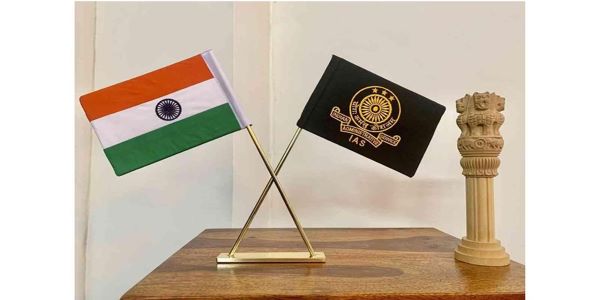Aspirants are one of the busiest creatures in town. I know most of us to relate and agree with this. We try to keep up our social lives. We stay in touch with friends. Or maybe we also lose some on our way. The journey is very nerve-wracking for most of us. We try to balance our family problems. Some of us move to diff towns to prepare for the exam. Few among us are students. As students, we try to balance our college life and deadlines with UPSC. Another bunch of aspirants is working professionals. Hence, our lives are very challenging even before UPSC. In today’s article, we will discuss an IAS officer’s transfer and first posting details.
About Today’s Article
Have you ever wondered how fast the life of an IAS officer can be? I am sure we have watched movies on TV. All of us have seen the hasty IAS officer transfer in drama series and shows. But now we are in the same shoes. This is a transit zone. The transition is from a common man to a person in authority. Hence, major life changes are bound to happen. Many of us find this task challenging. Some of us expect financial stability. But we all know the reality of being an IAS officer. While the other services under UPSC are quite stable, IAS is not.
Every day we come across various types of news. At least one officer is in news for some reason or the other. We have also seen states being uncomfortable with an IAS officer. Moreover, we have also seen how officers do not give up their good work despite their transfers. The true spirit of these officers is laudable. Many of us tend to inspire ourselves with this spirit. In today’s article, we will talk about the IAS officer’s transfer and first posting details. For an aspirant, it is imp to know about life after UPSC. One must not prepare for the exam without knowing these basic facts of the afterlife.
Rules for IAS Officer’s First Posting and Transfer
For some aspirants, LBSNAA was the best time of their lives. However, they find it tough to manage their professional lives thereafter. Somewhere, they didn’t see the tasks coming. Hence, it is a healthy sign for a smart aspirant to keep himself well aware of his work and lifestyle. Let us first start with reading about the IAS transfer rules. We know that IAS officers serve in diff districts. Districts are a part of a state. Hence, most of us assume that the state govt exercises power on IAS officers. However, this is not true. The very first rule to transfer an IAS officer is around this very issue. Only the central govt makes the rules for transferring IAS officers. Hence, the central govt plays a key role here. However, the state authorities play a role in decision-making.
The next rule says that only the central govt has the power to transfer the cadre of an IAS officer. Hence, no other authority can decide this. Mostly, cadres are changed due to marriages. That is when an IAS officer marries another IAS officer. When both the officers are from separate cadres, they can request transfer on marriage. One of the officers is transferred to the other officer’s cadre. Sometimes, both the officer may be shifted to a third cadre altogether. Let us now discuss the IAS Officer’s First Posting and Transfer Details as per inter-state rules.
Inter-State IAS Transfer Rules Details
The first inter-state transfer rule is related to the marriage of two officers. This type of IAS transfer is possible only when two officers from diff cadres are tied by marriage. Moreover, both officers must apply for the transfer. Note that both the people must be IAS officers strictly. We all know that the IAS officer’s first posting and transfer are very tough. Some areas are more difficult to deal with. On the other hand, very few officers serve the metropolitans. Hence, in rare cases of hardships, IAS transfer is requested. Now, what does an ‘extreme hardship’ include for this transfer.
Firstly, the IAS officer can request transfer on receiving life threats. Secondly, he and his family are in immediate danger due to the immediate environment of the cadre. The danger is most around life. Along with life threats, a severe health problem to the officer or his family can also be considered reasonable. However, the hardship aspect rarely gets an IAS transferred. Upon the request, the central govt deeply scrutinizes the reasons. Expert advice is taken. Thereby, the decision-making process is duly completed.
Transfer on Marriage
The reasons for transfer must satisfy the authorities. Then, you will receive your transfer order. On genuine requestions, the govt may transfer an officer on a three-year deputation to a state. The state can be of the officer’s choice. After three years, the govt will assess the situation. On positive results, the officer can serve in this state even after 3 years. Moving ahead, you cannot opt for your home cadre during this process. In the case of marriage, one of the two states must accept the cadre application. The spouse attains transfer only on this condition. However, if both the states reject the request, the govt will allow a third cadre state. Here are more transfer details from DOPT: click now.
IAS Officer’s First Posting Details
Let us now read about the IAS first posting of cadre officers. The central and state govt manages all the state and joint cadre posts. The central govt consults with the concerned state govt. The parties further set the terms as per rules. Item 1 of the schedule to the IAS Regulation, 1955 lists the terms for the same. Secondly, a cadre officer maintains the minimum said tenure. This excludes the event of deputation outside the state. That is training exceeding two months, promotion, or retirement. Further, a cadre post cannot remain unfilled or suspended for more than 6 months. However, the central govt may have a final say in the same.
There are many such provisions around IAS Transfer and First Posting Details. The rules are precise and applicable on deputation. Here are some tips to survive in the tough job roles of an IAS officer. LBSNAA trains you after selection. There is probation after training. Further, an IAS officer will get the first posting. Your first posting is in your allotted cadre. The tasks during your job can range from moderately difficult to extremely tough. In this article, we noted that the central govt has the final say in everything.
Types of Transfer and Tips for Smooth Transfers
However, the state govt can also make suggestions. Hence, the decision-making process is quite long. Thus, when if you apply for a change in the cadre, it will take some time. You need a very strong reason to change your deputation. There are two types of transfers. The first type is transfer on official notice. Here you rarely have a say about the decision. The second type is when you request a transfer. Here, there is a chance of both acceptance and rejection of your application. The decision depends on your reason for transfer. How to survive in difficulties.
Firstly, you will receive a notice of IAS transfer. Then, you need to assess the condition of your deputation. Secondly, have a plan in your mind. You can read about the area before shifting to your new workspace. Once you reach your new posting, you can go on a field visit. Then you can check all the documents. This will prepare you for your new challenges. One must handle tough cases with a calm mind. To ace this section of your job, the UPSC exam has added a new paper. That is GS Paper IV. This paper is all about Ethics, Governance, and Aptitude. You will learn case studies in this paper. Make sure you learn this subject well. It has great practical significance. To read more such articles: click here.
FAQs
This is a very uncertain question. A lot of factors influence an IAS officer’s first posting and transfer. Hence, any definite number is impossible to quote. An officer can be transferred as many times as the central govt notifies.
When an IAS officer completes training, he is allotted a cadre. A cadre is basically the area of his/her deputation. It is usually a state in which the IAS officer has to work. The cadre allotted is not easily changed. However, under certain conditions, the officer can be shifted to a diff cadre.
An IAS officer is appointed by the central govt. However, he/she works under the state govt districts. Hence, both the state and central govt exercise some control. However, the authority appointing the officer will only decide other matters as well.
Editor’s Note | IAS Transfer
Here, we will conclude our article. In today’s article, we talked about the rules and regulations behind an IAS officer’s transfer. Further, we also discussed an IAS officer’s first posting. In the process, we listed the diff facts about the same. Thus, we learned the diff conditions to change an officer’s cadre or posting. Every day we come across news of an IAS office’s transfer. But is it that easy? Clearly, that is not the case. We hope that today’s article helped you to learn the story behind all the IAS transfers and posting news.











